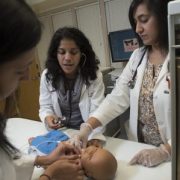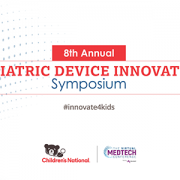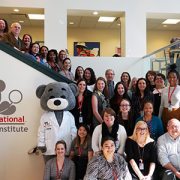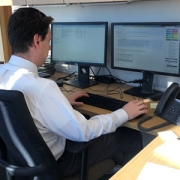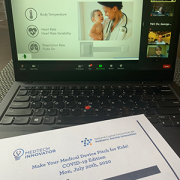At AAP: hands-on simulation training with life-saving technology
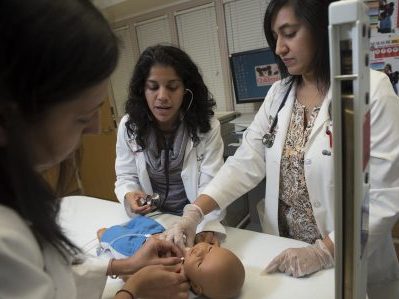
Recent medical breakthroughs have enabled very premature infants and children with rare genetic and neurological diseases to survive what had once been considered to be fatal conditions. This has resulted in a growing number of children with medically complex conditions whose very survival depends on ongoing use of technology to help their brains function, their lungs take in oxygen, and their bodies remain nourished.
“Many pediatricians care for technology-dependent children with special health needs,” says Neha Shah, M.D., M.P.H., an associate professor of pediatrics in the Division of Hospitalist Medicine at Children’s National Health System. “These kids have unique risks – some of which may be associated with that life-saving device malfunctioning.” Because there is no standard residency training for these devices, many clinicians may feel ill-equipped to address their patients’ device-related issues. To bridge that training gap, Dr. Shah and co-presenters, Priti Bhansali, M.D., M.Ed., and Anjna Melwani, M.D., will lead hands-on simulation training during the American Academy of Pediatrics 2016 National Conference.
“Inevitably, these things happen at 3 in the morning,” Dr. Shah adds. “Individual clinicians’ skill level and comfort with the devices varies. We should all have the same core competency.”
How the training works
During the simulation, the audience is given a specific case. They have eight minutes to troubleshoot and resolve the issue, using mannequins specially fitted with devices, such as trach tubes and feeding tubes, in need of urgent attention. Depending on their actions, the mannequin may decompensate with worsened breathing and racing heartbeats. The high-stakes, hands-on demo is followed by a 12-minute debrief, a safe environment to review lessons learned. Once they complete one simulation, attendees move to the next in the series of four real-life scenarios.
“We’ve done this a few times and my heart rate still goes up,” Dr. Shah admits. After giving similar training sessions at other academic meetings, participants said that having a chance to touch and feel the devices and become familiar with them in a calm environment is a benefit.
Dr. Shah came up with the concept for the hands-on training by speaking with a small group of peers, asking about how comfortable they felt managing kids with medical complex cases. The vast majority favored additional education about common devices, such as gastronomy tubes, tracheostomy tubes, and ventriculoperitoneal shunts. In addition to the in-person training, the team has created a web-based curriculum discussing dysautonomia, spasticity, gastroesophageal reflux disease, enteric feeding tubes, venous thromboembolism, and palliative care, which they described in an article published in the Fall 2015 edition of the Journal of Continuing Education in the Health Professions.
“Most times, clinicians know what they need to do and the steps they need to follow. They just haven’t done it themselves,” Dr. Bhansali adds. “The simulation forces people to put their hands on these devices and use them.”
AAP 2016 presentations:
Saturday, October 22, 2016
- W1059- “Emergencies in the Technology-Dependent Child: What Every Pediatrician Should Know” 8:30 a.m. to 10 a.m. (SOLD OUT)
- W1131- “Emergencies in the Technology-Dependent Child: What Every Pediatrician Should Know” (Encore) 2 p.m. to 3:30PM


